Happy Friday, GPODers!
Many are currently experiencing the peak heat of summer, but we’re winding down the week in a much cooler climate with more photos from Priscilla King’s visit to Tromsø Arctic-Alpine Botanical Garden. Located in the Arctic Circle, in the northernmost city in Norway, this unique institution highlights all the spectacular plants that grow in extreme alpine environments around the world. Check out Part 1if you missed it yesterday, and continue scrolling to see more from this unbelievable garden.
We just returned from a cruise into the Arctic Circle, where we saw an incredible alpine garden in Tromsø, Norway. It is the world’s northernmost botanic garden and has collections of plants from the Arctic and cool parts of all the continents. Although many plants had signs, many did not, so I don’t know what a lot of them are. The plants are grown in rock crevices and boulders that have a natural cover of lichen and moss.
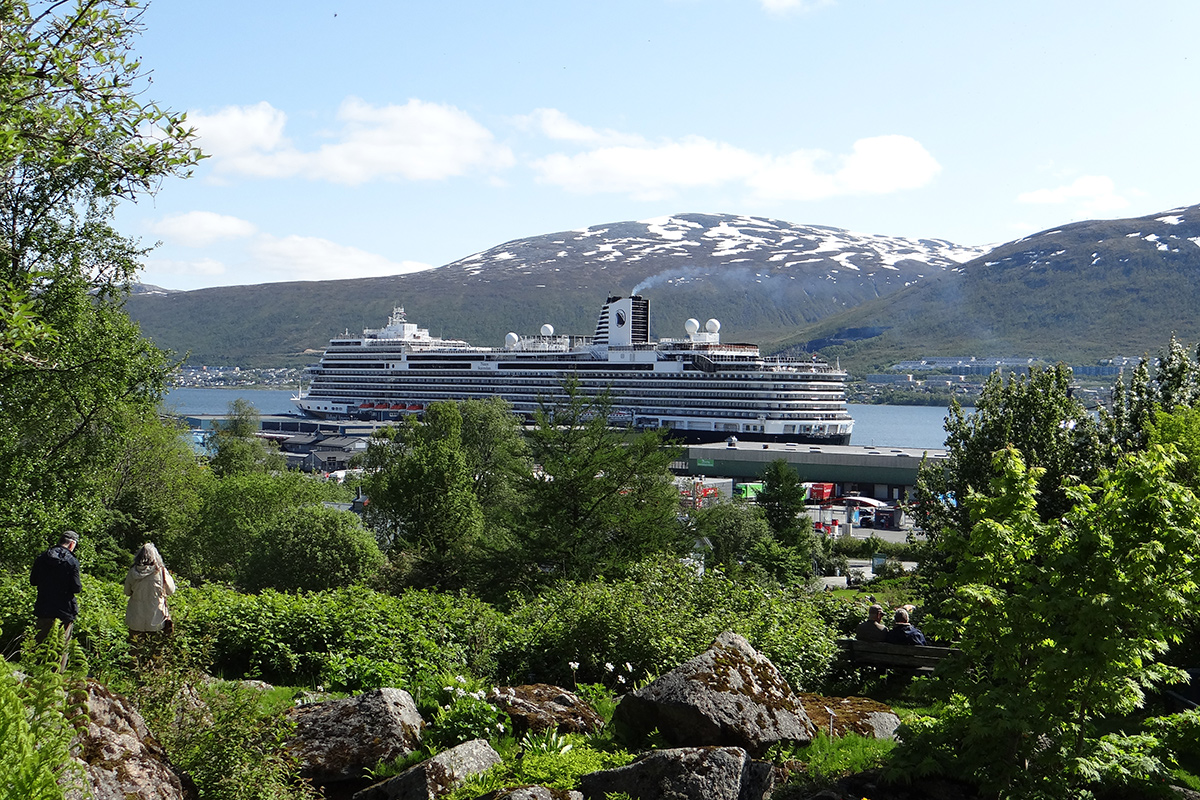 Looking from the gardens back to our cruise ship: It was a very short walk and quite a surprise to find such a gorgeous garden within walking distance of the ship!
Looking from the gardens back to our cruise ship: It was a very short walk and quite a surprise to find such a gorgeous garden within walking distance of the ship!
 Bergenia is not uncommon in shade gardens in cooler climates, but the Chinese bergenia (Bergenia emeiensis, Zones 5–8) is one species that is a little rarer. It flowers earlier than other species, and the bright green foliage will shift to a vibrant red in fall and winter.
Bergenia is not uncommon in shade gardens in cooler climates, but the Chinese bergenia (Bergenia emeiensis, Zones 5–8) is one species that is a little rarer. It flowers earlier than other species, and the bright green foliage will shift to a vibrant red in fall and winter.
 Yesterday we admired some orange Altai globeflower (Trollius altaicusZones 4–8), and today we get to see their yellow relative, the European globeflower (Trollius europseus Zones 3–6). This species, with blooms less open than the Altai we saw yesterday, really highlights where they get the globeflower name.
Yesterday we admired some orange Altai globeflower (Trollius altaicusZones 4–8), and today we get to see their yellow relative, the European globeflower (Trollius europseus Zones 3–6). This species, with blooms less open than the Altai we saw yesterday, really highlights where they get the globeflower name.
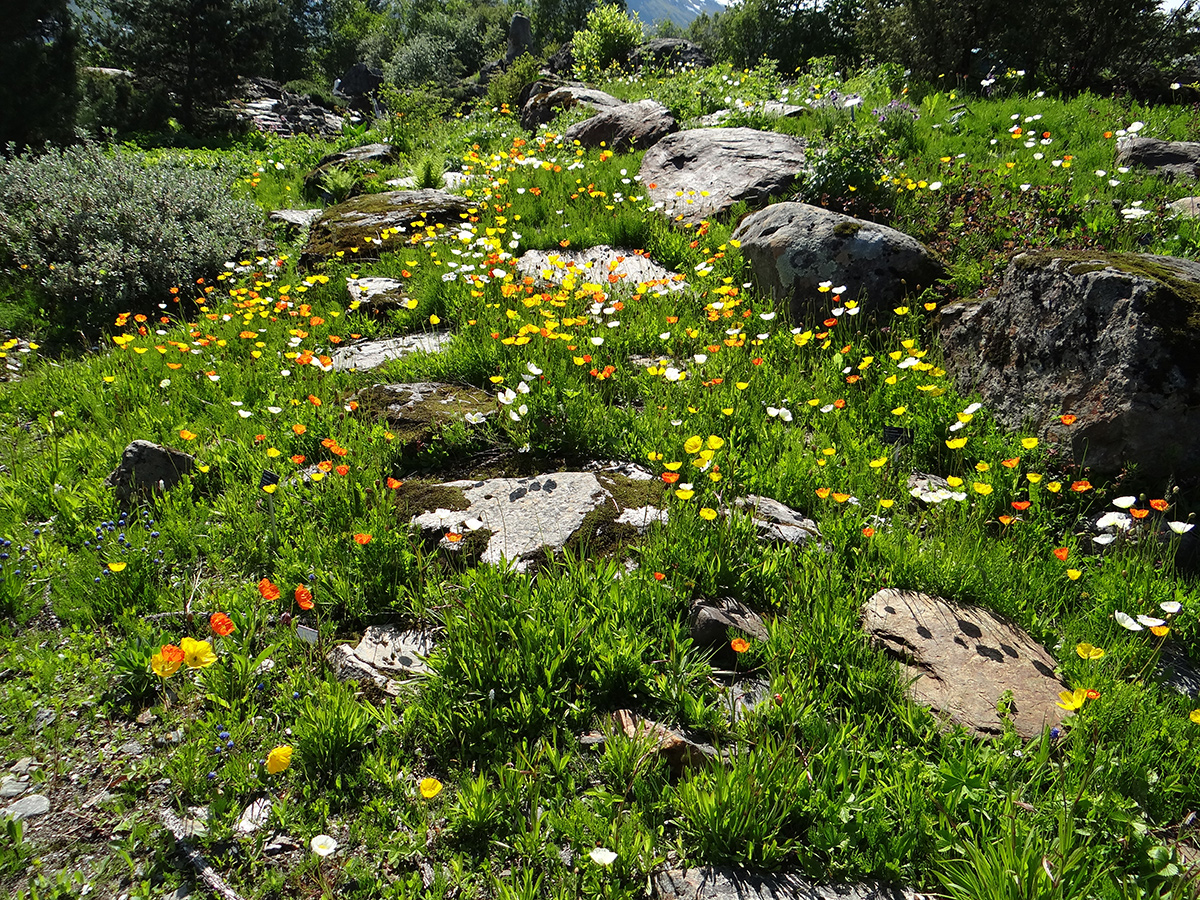 More cheerful yellow blooms come from this gorgeous scattering of California poppies (Eschscholzia californica, Zones 6–10) in this small rocky meadow. The elaborate ornamental beds created at botanical gardens are always well done, but perfectly naturalistic scenes are just as impressive.
More cheerful yellow blooms come from this gorgeous scattering of California poppies (Eschscholzia californica, Zones 6–10) in this small rocky meadow. The elaborate ornamental beds created at botanical gardens are always well done, but perfectly naturalistic scenes are just as impressive.
 Often grown for its large, textured foliage, Chinese rhubarb (Rheum palmatum Zones 5–7) is also admirable for its out-of-this-world blooms on towering stalks.
Often grown for its large, textured foliage, Chinese rhubarb (Rheum palmatum Zones 5–7) is also admirable for its out-of-this-world blooms on towering stalks.
 Leather bergenia (Bergenia crassifolia, Zones 4–8) is a more common relative to the Chinese bergenia above, with smaller pink blooms but equally fabulous evergreen foliage. But my favorite facts about this plant are hidden in their two common names. Leather bergenia relates to the tannin found in its roots, leaves and stems, which is used in creating leather. The other common name, pigsqueak, comes from the sound that’s made when you rub a leaf between your fingers.
Leather bergenia (Bergenia crassifolia, Zones 4–8) is a more common relative to the Chinese bergenia above, with smaller pink blooms but equally fabulous evergreen foliage. But my favorite facts about this plant are hidden in their two common names. Leather bergenia relates to the tannin found in its roots, leaves and stems, which is used in creating leather. The other common name, pigsqueak, comes from the sound that’s made when you rub a leaf between your fingers.
 And a close-up of those pretty pink blooms
And a close-up of those pretty pink blooms
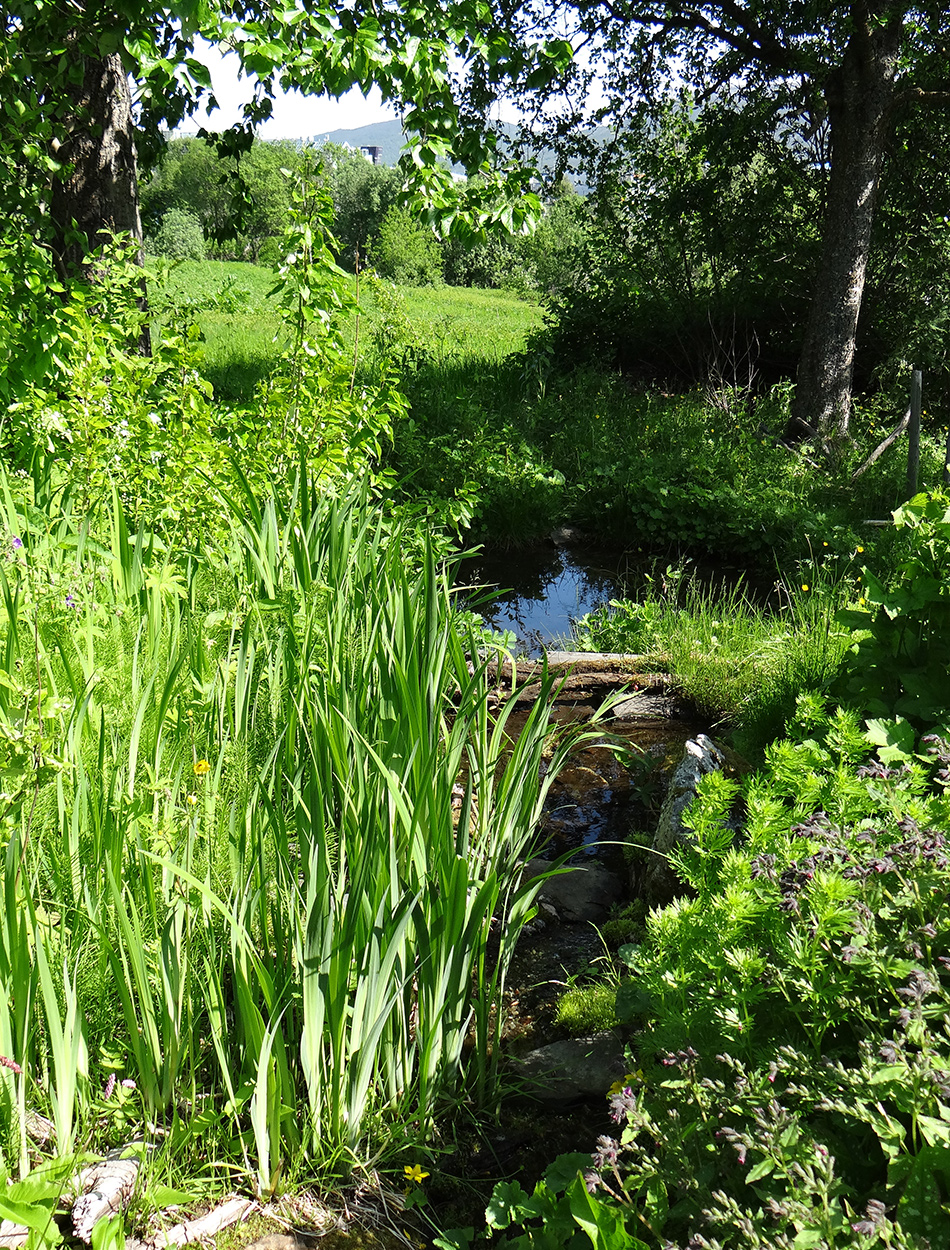 Yesterday’s photos showcased more of the rock gardens at Tromsø, but these regions are not without lush greenery. Mountain ranges are vibrant and verdant, and always feature the bluest water you’ve ever seen. This botanical garden obviously does an impeccable job showcasing all aspects of these environments.
Yesterday’s photos showcased more of the rock gardens at Tromsø, but these regions are not without lush greenery. Mountain ranges are vibrant and verdant, and always feature the bluest water you’ve ever seen. This botanical garden obviously does an impeccable job showcasing all aspects of these environments.
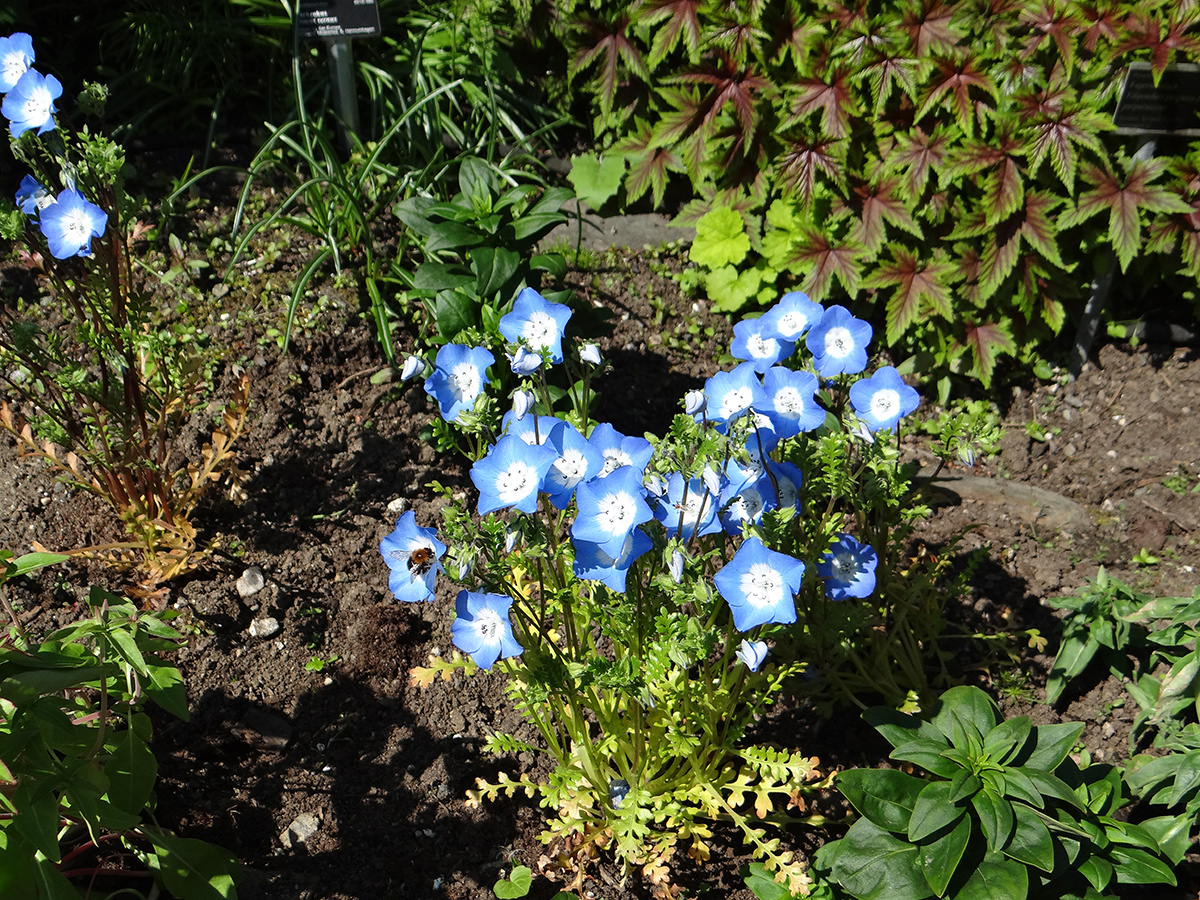 If you live in the Golden State, you will likely recognize the bright blooms of baby blue eyes (Nemophila menziesii, annual). Native to California, Baja California, and Oregon, it is most prolific in California, where it grows from sea level to about 6,500 feet elevation. Apparently, it can also bloom beautifully during springtime in the Arctic Circle.
If you live in the Golden State, you will likely recognize the bright blooms of baby blue eyes (Nemophila menziesii, annual). Native to California, Baja California, and Oregon, it is most prolific in California, where it grows from sea level to about 6,500 feet elevation. Apparently, it can also bloom beautifully during springtime in the Arctic Circle.
Thank you so much for sharing this bucket-list trip with us, Priscilla! A botanical garden is the last thing one might expect to find on a journey to the Arctic Circle, but it is an amazing testament to the diverse world of plants.
While it is peak growing season, it is also peak vacation season. If you visit any public gardens in your travels, we would love to see some highlights on the blog. Follow the directions below to submit photos via email, or send me a DM on Instagram: @agirlherdogandtheroad.
We want to see YOUR garden!
Have photos to share? We’d love to see your garden, a particular collection of plants you love, or a wonderful garden you had the chance to visit!
To submit, send 5–10 photos to (email protected) along with some information about the plants in the pictures and where you took the photos. We’d love to hear where you are located, how long you’ve been gardening, successes you are proud of, failures you learned from, hopes for the future, favorite plants, or funny stories from your garden.
Have a mobile phone? Tag your photos on Facebook, Instagram, or Twitter with #FineGardening!
Do you receive the GPOD by email yet? Sign up here
Fine Gardening Recommended Products
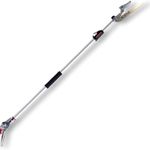
ARS Telescoping Long Reach Pruner
Fine Gardening receives a commission for items purchased through links on this site, including Amazon Associates and other affiliate advertising programs.
Telescopes from 4 to 7′. Cut and Hold (160) Blades. Drop forged blades for unsurpassed long lasting sharpness. Lightweight, 2.3 lbs., for continued use. Perfectly balanced for easy pruning.
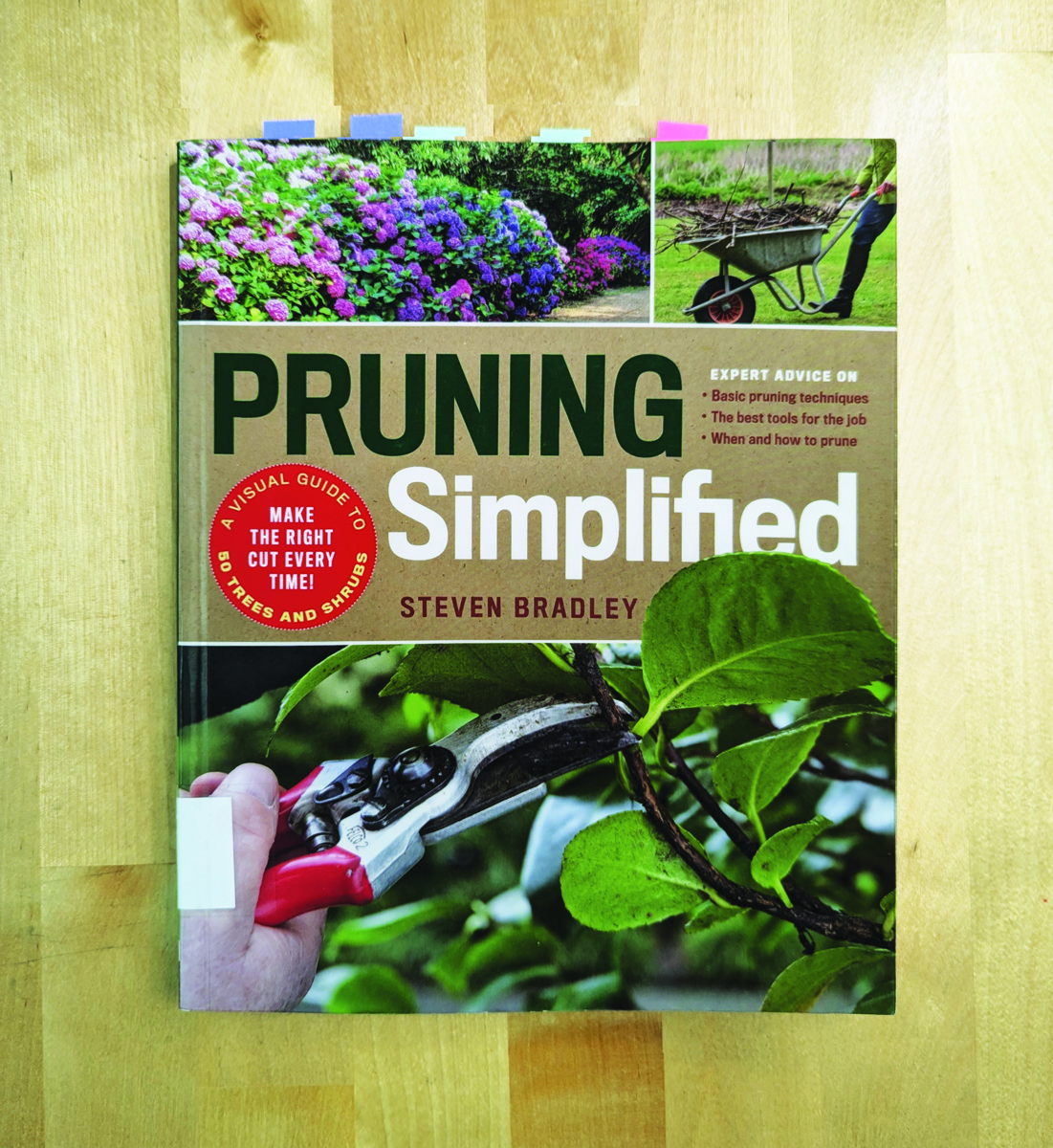
Pruning Simplified: A Step-by-Step Guide to 50 Popular Trees and Shrubs
Fine Gardening receives a commission for items purchased through links on this site, including Amazon Associates and other affiliate advertising programs.
Pruning Simplified shows you exactly how to do it. This must-have guide offers expert advice on the best tools for the job, specific details on when to prune, and clear instructions on how to prune. Profiles of the 50 most popular trees and shrubs—including azaleas, camellias, clematis, hydrangeas, and more—include illustrated, easy-to-follow instructions that will ensure you make the right cut the first time.

